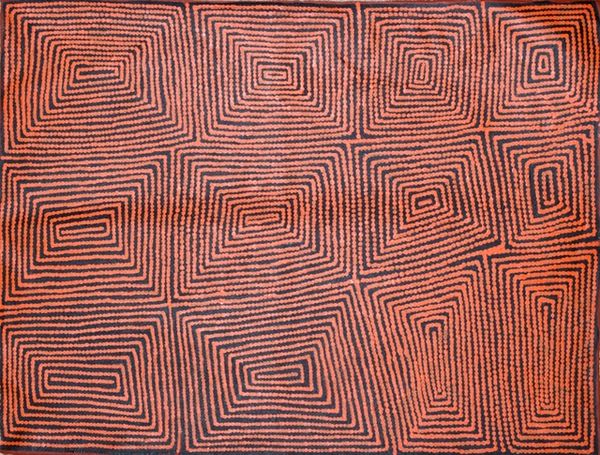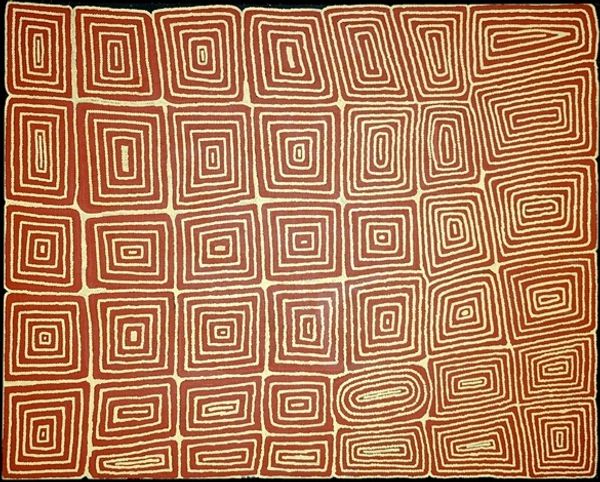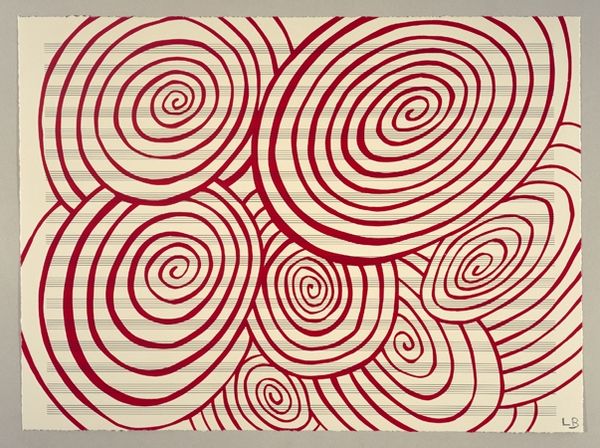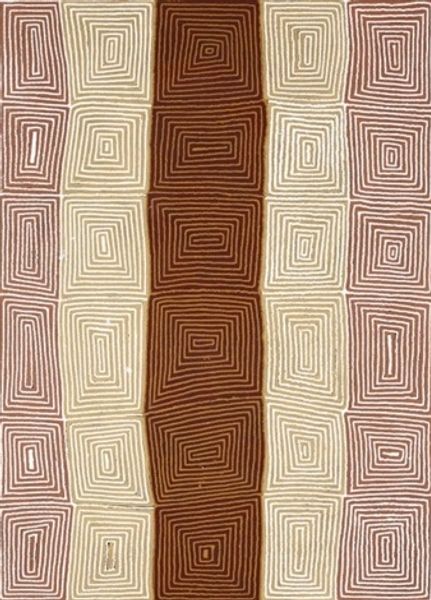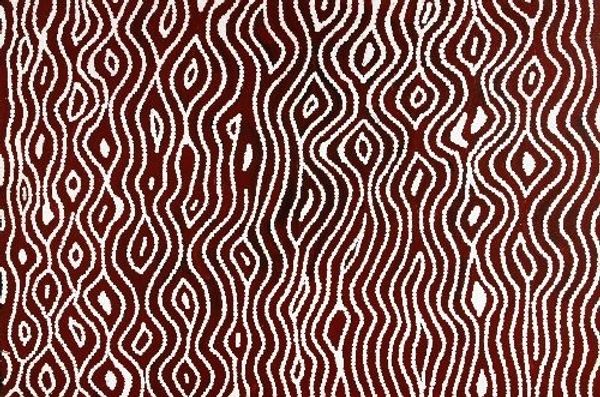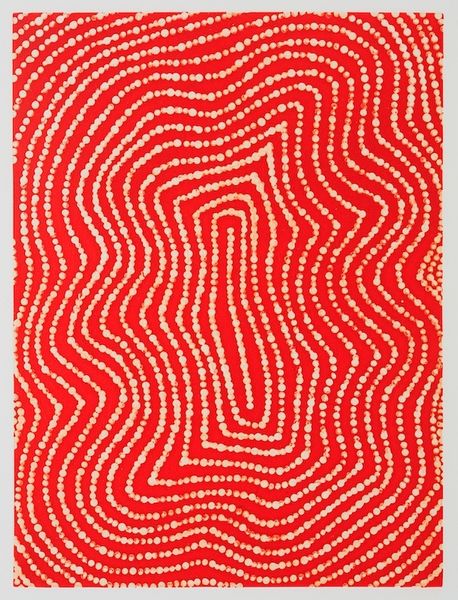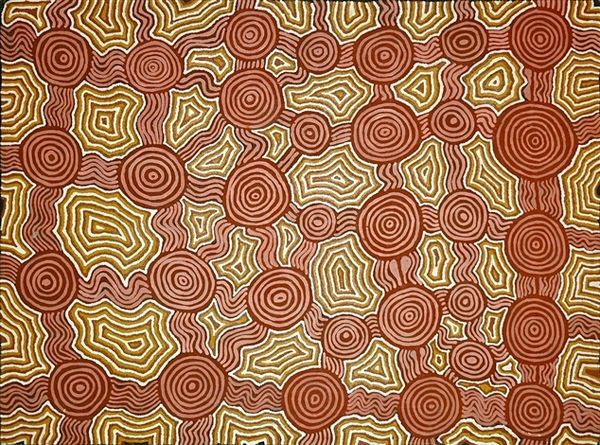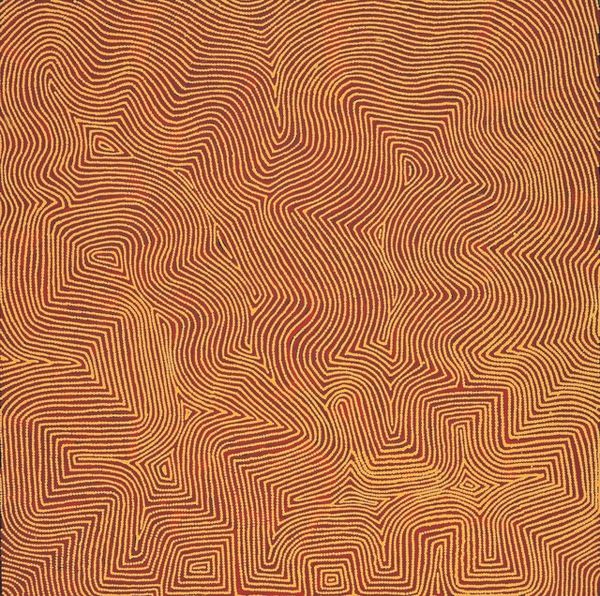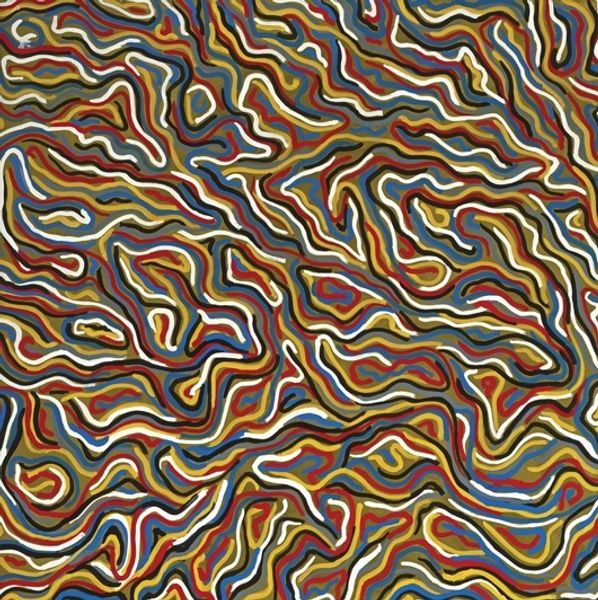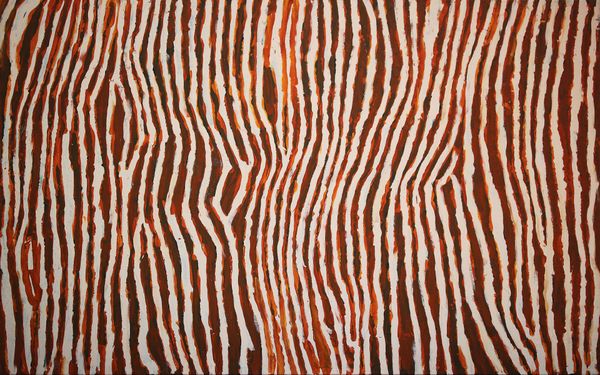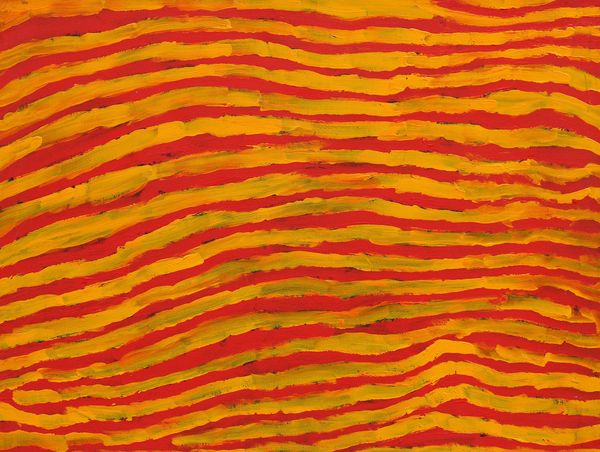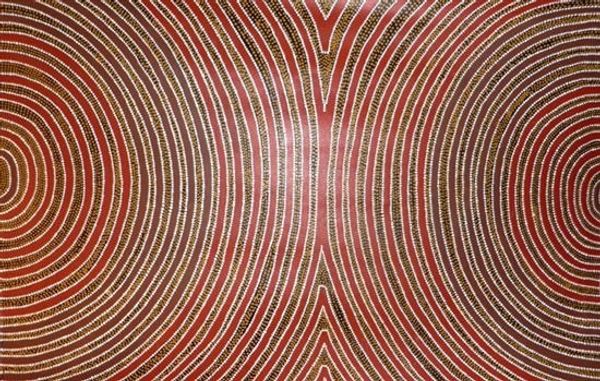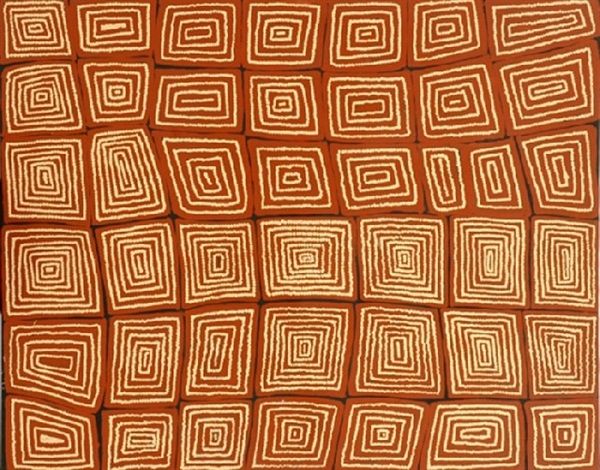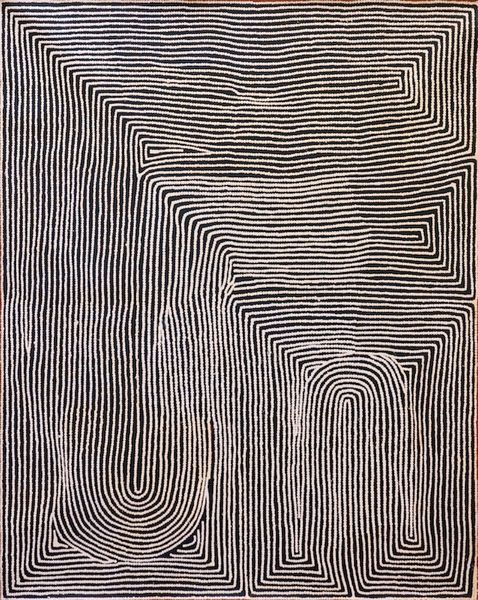
painting, acrylic-paint
#
natural stone pattern
#
painting
#
acrylic-paint
#
geometric pattern
#
abstract pattern
#
minimal pattern
#
organic pattern
#
geometric
#
repetition of pattern
#
vertical pattern
#
abstraction
#
pattern repetition
#
layered pattern
#
combined pattern
Copyright: Warlimpirrnga Tjapaltjarri,Fair Use
Editor: This striking work is titled *Untitled (WAT2885)* by Warlimpirrnga Tjapaltjarri, created with acrylic paint. The contrast between the geometric and organic shapes is quite arresting. How do you interpret this work, considering its blend of patterns? Curator: I see this work as a powerful assertion of Indigenous identity and resistance through the visual language of Country. The geometric patterns likely reference specific sites or ancestral narratives deeply embedded in the land. Think about the history of Indigenous art being dismissed as "primitive" and consider how Tjapaltjarri reclaims abstraction, using it to encode complex cultural knowledge that resists colonial attempts at erasure. Does this challenge the viewer to confront preconceived notions about Aboriginal art and its relationship to Western art movements? Editor: That's a fascinating perspective. I initially focused on the visual similarities to Abstract Expressionism or Pattern and Decoration. So are you saying those connections are potentially misleading, if not completely irrelevant? Curator: Not entirely irrelevant, but definitely secondary. While it is important to appreciate Indigenous artistic production as existing in conversation with global art trends, understanding this work necessitates acknowledging the long history of dispossession and the ongoing struggle for self-determination faced by Indigenous communities. Can you imagine how the artist's lived experience might shape his approach to pattern and form, imbuing it with a depth of meaning often absent in Western abstraction? Editor: Absolutely. Considering the historical and social context provides a much richer understanding. I appreciate how it moves beyond purely aesthetic appreciation. Curator: Indeed. This piece invites us to consider art as a form of cultural survival, a testament to the enduring strength and resilience of Indigenous traditions in the face of ongoing colonial legacies. Editor: I'll definitely carry that perspective forward. It highlights the importance of engaging with the stories behind the art, not just the visual elements.
Comments
No comments
Be the first to comment and join the conversation on the ultimate creative platform.
